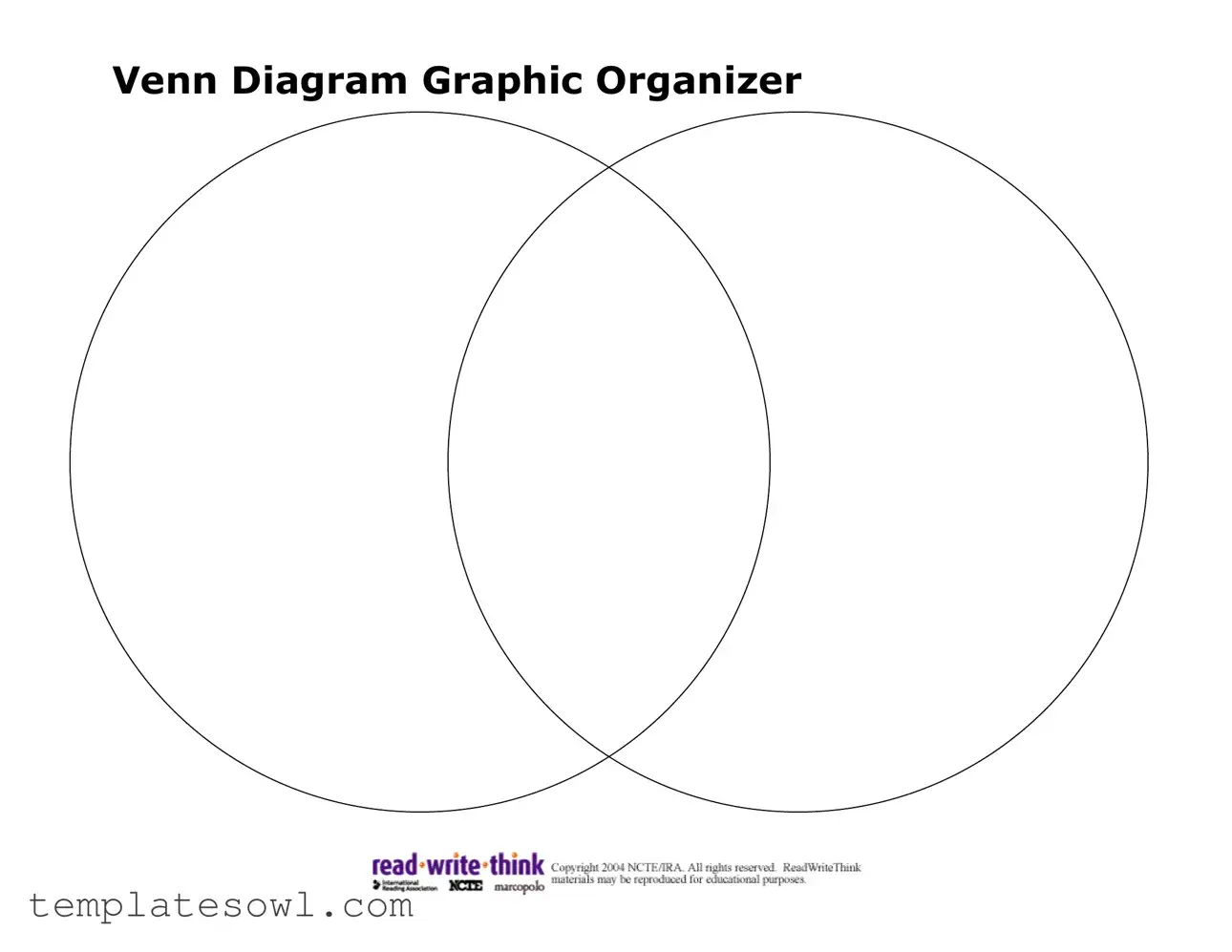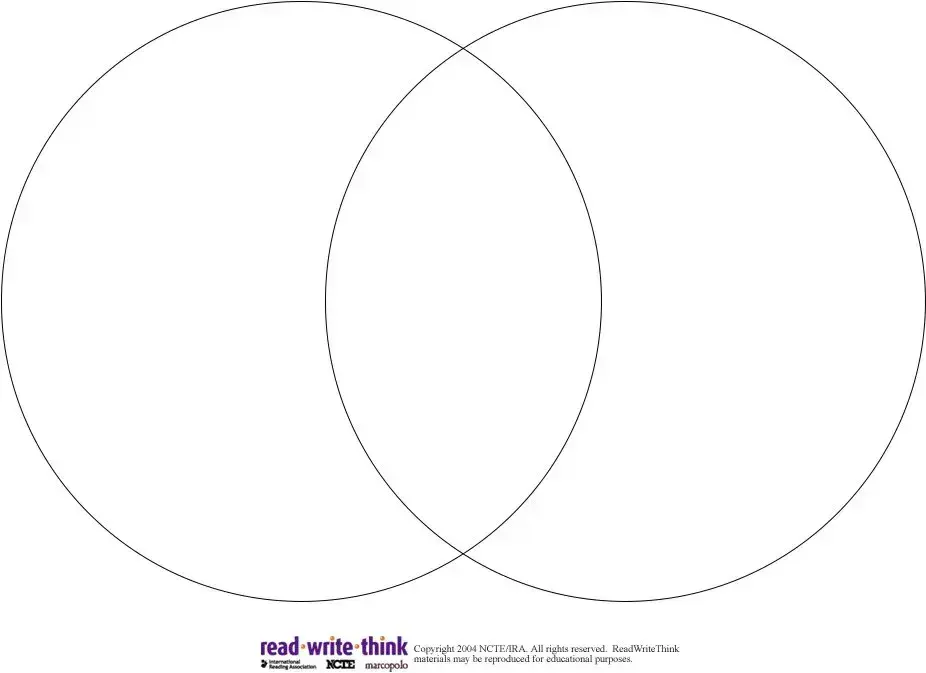What is a Venn Diagram Graphic Organizer?
A Venn Diagram Graphic Organizer is a visual tool used to illustrate the relationships between different sets or groups. It consists of overlapping circles that represent the characteristics of each group. The areas where the circles overlap show shared features, while the non-overlapping sections highlight unique attributes.
How can I use a Venn Diagram in my studies?
You can use a Venn Diagram to compare and contrast different subjects, ideas, or concepts. For example, when studying two authors, you can list their unique styles in the non-overlapping areas and common themes in the overlap. This helps clarify similarities and differences, making it easier to understand the material.
What subjects are best suited for a Venn Diagram?
Venn Diagrams are versatile and can be used across various subjects. They are especially effective in language arts for comparing literature, in science for illustrating differences between species, and in social studies for comparing historical figures or events. Any subject that involves comparison can benefit from this tool.
Is there a specific way to fill out a Venn Diagram?
There’s no strict method for filling out a Venn Diagram, but a common approach is to identify and list attributes for each group before placing them in the relevant sections of the diagram. Begin with the unique traits, then fill in the overlapping area with shared characteristics. This logical flow aids in clarity.
Can I use a Venn Diagram for group projects?
Absolutely! A Venn Diagram is a great way to facilitate discussion and collaboration in group projects. Team members can collectively identify the strengths and weaknesses of ideas, divide responsibilities, and highlight shared goals, fostering an environment of teamwork and understanding.
Are there digital tools available for creating Venn Diagrams?
Yes, many digital tools and applications exist for creating Venn Diagrams. Programs like Google Drawings, Microsoft Word, and various online platforms offer templates and customization options. Using digital tools can enhance visual appeal and ease of sharing among team members or classmates.
What are some tips for making an effective Venn Diagram?
To create an effective Venn Diagram, keep the following tips in mind: use clear labels for each circle, limit the amount of information to avoid clutter, and ensure the overlap is relevant and concise. Additionally, use different colors for each circle to enhance visualization and make distinctions clearer.
Can Venn Diagrams be used for more than two sets?
Yes, Venn Diagrams can be expanded to include more than two sets. While the complexity increases with additional circles, they can still effectively showcase relationships among multiple groups. Be cautious of overcrowding the diagram; clarity is key for effective communication.

